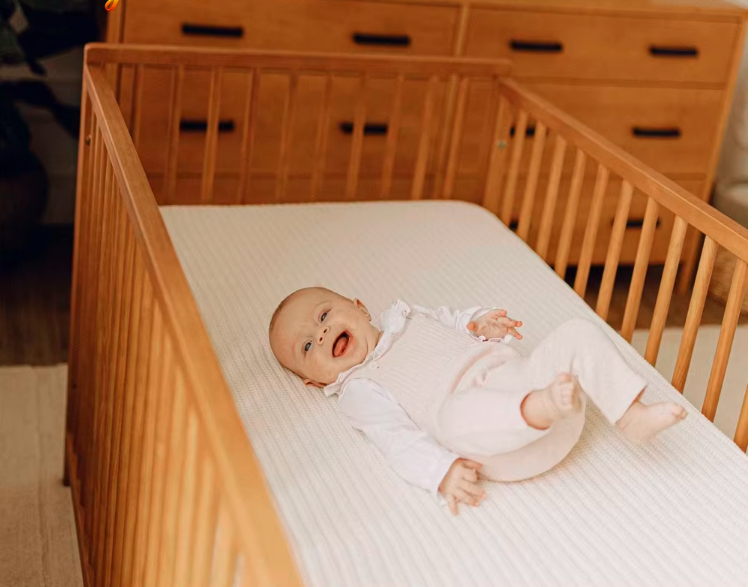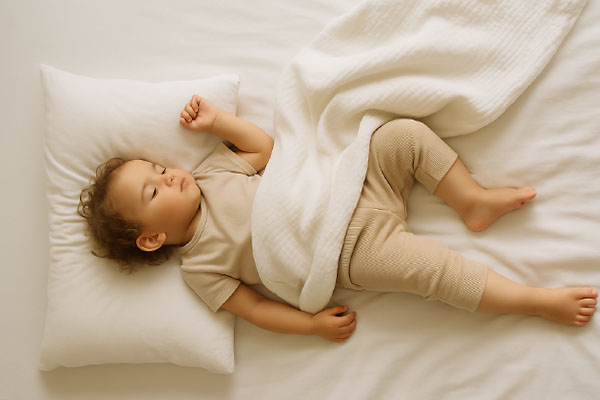Your Guide To A Natural Night’s Sleep For Babies?
Tired of restless nights and over-complicated baby sleep advice? You’re definitely not alone.
A natural night’s sleep for babies means creating a safe, calm, and consistent environment using gentle rhythms, breathable materials, and age-appropriate routines.

Modern parenting can feel like a tech overload—sound machines, smart bassinets, sleep-tracking apps. But sometimes, the best sleep comes from going back to basics. Here’s how to support your baby’s sleep the natural way.
What Does “Natural Sleep” Really Mean?
Natural sleep doesn’t mean no structure—it means aligning with your baby’s biological rhythms.
Natural sleep refers to a baby falling asleep and staying asleep without artificial stimulation, relying on instinct, routine, and environmental cues.

Key Principles of Natural Baby Sleep
Over the years, I’ve seen what works. Here’s the foundation of truly restful, natural sleep:
| Principle | Why It Matters |
|---|---|
| Consistency | Trains the body to expect sleep |
| Darkness | Boosts melatonin naturally |
| Breathable materials | Regulates temperature without overheating |
| Gentle rhythm | Mimics womb and builds trust |
| Emotional security | Reduces stress, encourages calm |
When my baby slept in a dim, quiet room with breathable cotton, he relaxed faster and woke up less—even compared to when we tried more “high-tech” setups.
How Can the Sleep Environment Support Natural Rest?
Babies respond to their environment more than we realize.
Create a natural sleep space using breathable fabrics, a cool room temperature, soft lighting, and no overstimulation.

What to include—and avoid?
Think simple, not sterile. Here’s what a natural sleep setup looks like:
| Element | Ideal Natural Option | What to Avoid |
|---|---|---|
| Bedding | Organic cotton, wool mattress pad | Synthetics, plastic covers |
| Temperature | 68–72°F (20–22°C) | Overheating or thick layers |
| Lighting | Soft, warm tones or blackout curtains | Bright overheads, nightlights |
| Sound | Gentle white noise or silence | Loud lullabies or music loops |
| Sleepwear | Breathable, season-appropriate layers | Fleece, polyester blends |
When I switched to a wool mattress pad and organic sleep sack, night wakings dropped by half. The comfort level matters more than we think.
What Is a Natural Sleep Routine?
Forget rigid schedules—focus on rhythm and responsiveness.
A natural routine respects the baby’s cues and builds a predictable rhythm with calming rituals like dimming lights, soft voices, and cuddles.

Gentle Sleep Routine Example
| Step | What It Looks Like |
|---|---|
| Wind-down cue | Dim lights, lower voices |
| Warm bath (optional) | Soft towel and bonding time |
| Feeding | In quiet, distraction-free space |
| Cuddle + lullaby | No screens, just presence |
| Place in bed drowsy | Not asleep, not fully awake |
This routine doesn’t have to happen at a precise time. Instead, I followed sleepy signs—yawning, eye rubbing, turning away—and started winding down naturally.
Do Natural Materials Really Improve Baby Sleep?
Yes—because sleep quality depends on comfort and breathability.
Natural materials like organic cotton, wool, and bamboo regulate temperature better, reduce skin irritation, and avoid toxic off-gassing.

Best Materials for Baby Sleep
| Product Type | Best Natural Material | Why It Works |
|---|---|---|
| Mattress | Coconut coir, wool | Breathable and firm |
| Sheets & Sleepwear | Organic cotton, bamboo | Soft, hypoallergenic |
| Sleep sacks | Merino wool or muslin | Regulates heat without bulk |
| Blankets (if used) | Organic cotton knit | Lightweight and cozy |
One customer told me switching to an organic sleep sack helped reduce her baby’s eczema flare-ups—and her sleep improved almost overnight.
How to Handle Sleep Challenges Naturally?
You don’t need gadgets or strict sleep training to get results.
Most sleep issues can be eased with adjustments to routine, environment, or diet—without artificial sleep aids or noise machines.

Common Sleep Disruptors & Natural Fixes
| Problem | Natural Solution |
|---|---|
| Frequent night wakings | More daytime light, early bedtime |
| Short naps | Hold or wear baby, then shift to crib |
| Restless sleep | Check room temp and clothing |
| Trouble falling asleep | Start wind-down 30 mins earlier |
When my baby hit a sleep regression, I didn’t force “cry-it-out.” Instead, I offered more skin-to-skin during the day and adjusted the bedtime earlier. Within days, his sleep became less chaotic.
Should You Avoid Sleep Training for Natural Sleep?
Not necessarily—but choose gentle over rigid.
You can guide your baby toward better sleep habits using calm, consistent methods—without leaving them alone to cry.

Gentle Approaches That Support Natural Sleep
| Method | Description |
|---|---|
| Pick-up/put-down | Comfort baby, then place back in bed |
| Chair method | Sit nearby as they fall asleep |
| Fading | Gradually reduce involvement each night |
| Routine consistency | Reassures baby through rhythm and predictability |
These approaches let babies feel supported, not abandoned—building long-term confidence in sleep.
Conclusion
A natural night’s sleep for babies starts with rhythm, comfort, and simplicity—not apps or gadgets. When you follow your baby’s cues and create a breathable, calming space, sleep follows naturally.












